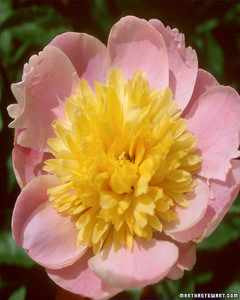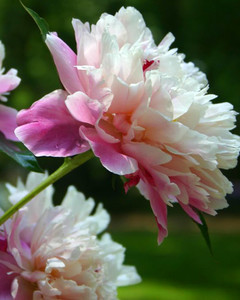




While the beauty and elegance of peonies could seem intimidating to a novice gardener, caring for them is much simpler than you might think.
"Peonies are easy!" says Kathleen Gagan, owner of Peony's Envy in Bernardsville, New Jersey. "They're disease-resistant, so they don't need pesticides, and once established, they don't need a lot of water.
The key is patience -- peonies can take a few years to settle in once planted, but they'll live for hundreds of years. Think of it as a long-term relationship.
Peonies grow from zones 3 to 8, and while herbaceous peonies crave lots of sunshine, tree peonies like dappled shade. The best time to plant is generally the first week of April.
When selecting herbaceous peony roots to plant, look for healthy, fleshy firm roots (like firm carrots) and abundant eyes. As you plant, it's important to position the eyes of the root at the right depth. This varies by zone -- in general you'll want the eyes closer to the surface the warmer your climate.
Tree peonies are difficult to find, but if you can get them they're worth the investment. To plant, find where the root and stem meet, and plant 1 inch deeper. The trees can grow 7 to 8 feet tall over their lifetime -- and keep in mind that they can live hundreds of years!
Peonies make great cut flowers, and they're easy to store in your fridge for later use. Simply cut them before they're open, when they're tight and still hard like marbles. Then, wrap them in newspaper, place rubber bands on the ends, and store them on their sides in the refrigerator. Alternatively, you can store them upright in flower sleeves and a little bit of water.
Peonies come in eight forms, or shapes. No matter your growing environment or flower preference, there is a peony to suit any style.
Anemone
This early-blooming peony makes a great garden plant. It's low-growing -- around 2 inches tall -- and usually doesn't require staking.
Single
Revered for their prolific blooming, these peonies look like big daisies. They do well with a bit of shade in the afternoon to protect the flowers from the heat of the midday sun. Singles are a lighter flower form, so they usually don't need staking.
Lotus
This is another heavy-blooming plant. Its flowers feature two or three layers of guard petals and need to be protected from the hot afternoon sun. There is no need to stake the plants.
Chrysanthemum
Chrysanthemums are many-petaled flowers, with 5-10 layers of guard petals that get smaller as they approach the center. They prefer full sunshine.
Rose
Rose peonies feature a strong rose-like scent and lots of petals. Their petals are larger near the outside of the flower. These blooms are beautiful as cut flowers.
Golden Circle
This striking variety is Martha's favorite peony form. They have big, full flowers with wonderful blooms.
Crown
With their large, wide outer guard petals and tight, curly center petals, these peonies are shaped like ice cream scoops. When fully open, the guard petals fold all the way back and the flowers look like big balls in the garden.
Hundred Proliferate
These flowers contain the most petals out of any peony form -- at least 100 each. They are so full that you can hardly see the distinction between guard petals and center petals. They're widely known as the best form for cut flowers
Original article and pictures take http://www.marthastewart.com/271024/peonies-101 site
Комментариев нет:
Отправить комментарий